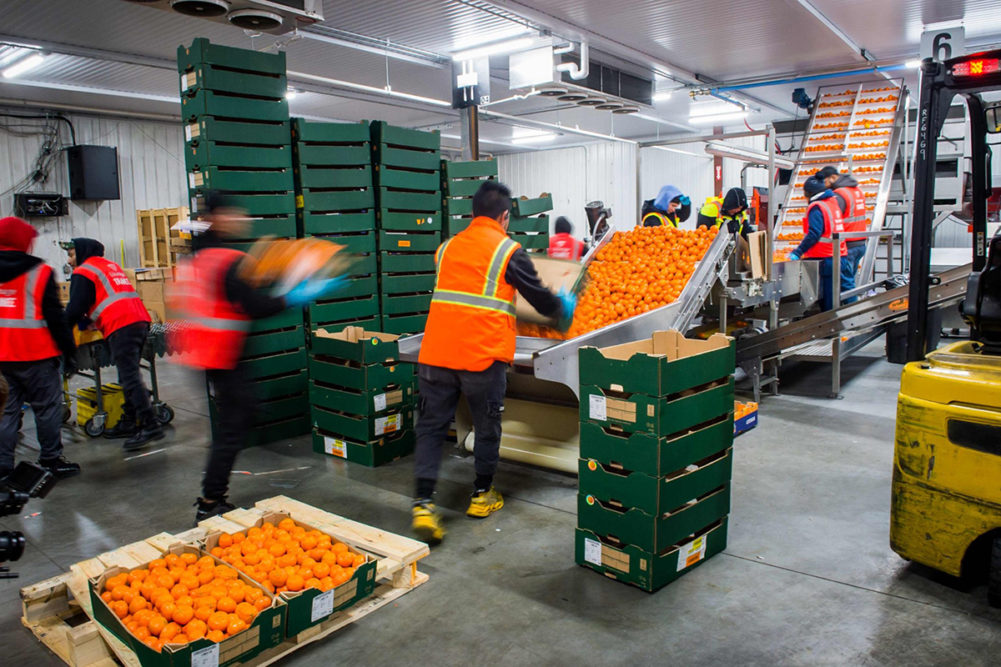First came the pandemic, which was bad enough. What followed in its wake — a worldwide supply-chain logjam — made moving the right amounts of goods from point A to point B, at the right time, even more challenging.
Logistics industry leaders are still navigating this new, post-COVID world, finding new ways to address new challenges in one of the toughest logistical arenas around: getting fresh foods where they need to go before their shelf life expires.
One way in which Lineage Logistics adjusted to the supply chain disruptions was by shifting from just-in-time to “just-in-case” inventory models, said Jim Henderson, the company’s vice president of business development.
“Having excess safety stock isn’t usually a viable option with fresh products, so we are always looking at other models, routes and ports to find ways to navigate congestion and obstacles,” Henderson said. “The industry is still defining the new normal.”
Lineage, he said, is working closely with its customers and using the latest data and innovative technology to help manage their supply chains and inventories more efficiently, he added.
At the height of the supply-chain crisis, port congestion triggered supply chain issues for perishable products like fresh produce.
Focus on fresh
Lineage’s newest fresh facility, Savannah Fresh-Port Wentworth, was specifically designed to address the overwhelming influx in imports of fresh produce to ports in the Mid-Atlantic, Henderson said.
The new 220,000-square-foot facility offers cross-docking services and has 23 inbound and outbound lanes that can process more than 40 trucks daily, moving up to 1.4 million pounds of produce per day.
Products can enter and exit the facility on the same day if needed, reducing storage time, creating cost efficiencies and ensuring consumers receive fresh produce faster, Henderson said. The facility also provides value-added services like fumigation and packaging services, and it features a dedicated area for agricultural inspections.
The facility will help address the problems mid-Atlantic companies face keeping up with demand and keeping costs in check and delivery times down.
“With proximity to the Port of Savannah, our new facility enables Lineage to deliver larger quantities of fresh produce more efficiently to consumers across the Southeast and beyond.”
To expedite the movement of product from the port to the warehouse, Lineage offers dedicated drayage services for customers. Drayage can be a huge issue during times of port congestion, Henderson said, adding cost and product risk for customers.
Providing drayage services has thus been a boon for Lineage’s clients’ import business. The service is available at its dedicated fresh facilities at the ports of Philadelphia; Wilmington, Del.; Savannah, Ga.; and New York/New Jersey; and in other locations including Miami, Los Angeles and Jacksonville, Fla.
Lineage recently added dray capacity, as well an additional 5,000 pallet positions, at its Swedesboro, N.J., facility, which serves the ports of Philadelphia, Wilmington and New York/New Jersey.
The company also recently opened a dedicated fresh facility in Savannah, which Henderson said is the fastest-growing port and largest single container terminal in North America, offering immediate access to Interstate 16 and the Interstate 95 corridor so that key cities throughout the Southeast and Midwest are within a two-day drive time.
Remaining challenges
Even though worldwide supply chains have started to return to something closer to normal, the transportation market and capacity is still volatile, Henderson said.
LTL transportation, for instance, is a challenge, particularly in the Southeast. But with more carriers entering that market every year, it is improving, he said.
Freshness is a function of expertise, speed and accuracy, Henderson said. Getting the right products to the right stores at the right time is critical for fresh foods.
Lineage’s services for fresh, grouped under the Lineage Fresh banner, allow products with short shelf lives to face fewer obstacles, less risk and less spoilage, thanks to the company’s cold storage technology and leading logistics network.
Lineage Fresh is a combination of three things, Henderson said:
- Fresh facilities that are specifically designed to accommodate fresh produce;
- A team of experts that understand this business; and
- Value-added services that ensure its customers’ products stay as fresh as possible all the way to consumers’ tables.
In addition to storage, Lineage offers end-to-end logistical solutions and value-added services – including inspections, fumigation, bagging, and repackaging – so customers can focus on their products while Lineage focuses on addressing their unique supply chain challenges, Henderson said.
In addition to product-specific services, Lineage’s global network also has a full range of drayage, transportation, customs brokerage, and other services.
“Customers can use our full suite of solutions or use specific services a la carte,” Henderson said. “Either way, they have access to a vast network of assets, infrastructure and experts in the field.”
As demand for fresh produce grows, Lineage will work with its customers to increase distribution efficiency, advance sustainability and minimize supply chain waste, Henderson said.
“Our network optimization team is constantly evaluating opportunities to grow and better serve our customers. Lineage offers access to an unrivaled global network of over 400 strategically located facilities, totaling more than two billion cubic feet of capacity across countries in North America, Europe and Asia-Pacific.”
Customers must continuously evaluate where their products are being produced versus where food is being consumed. Having access to such a widespread and diverse network of temperature-controlled facilities, Henderson said, is a game-changer.

